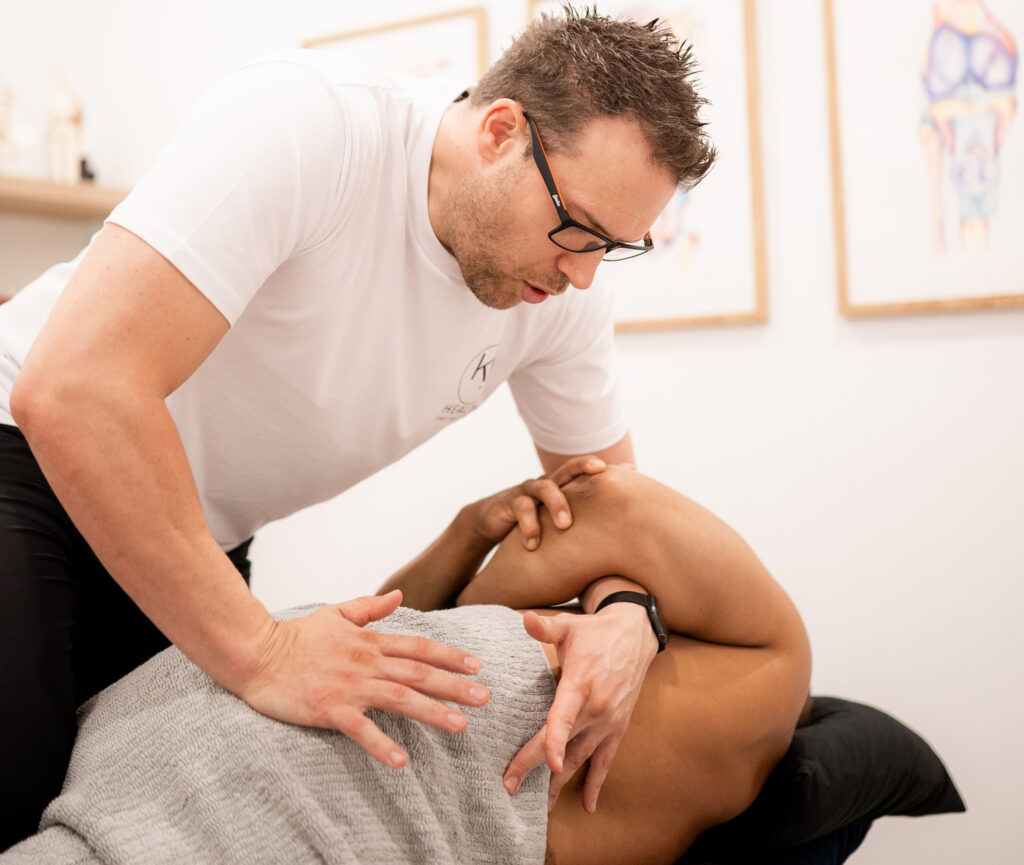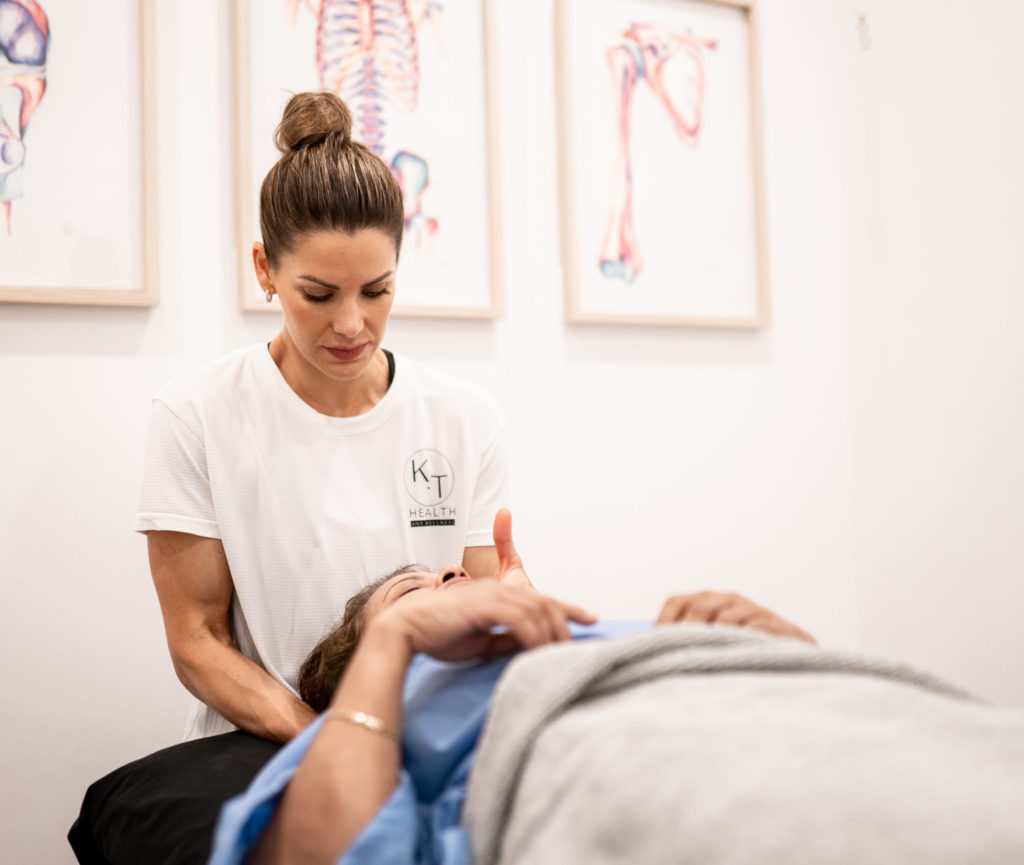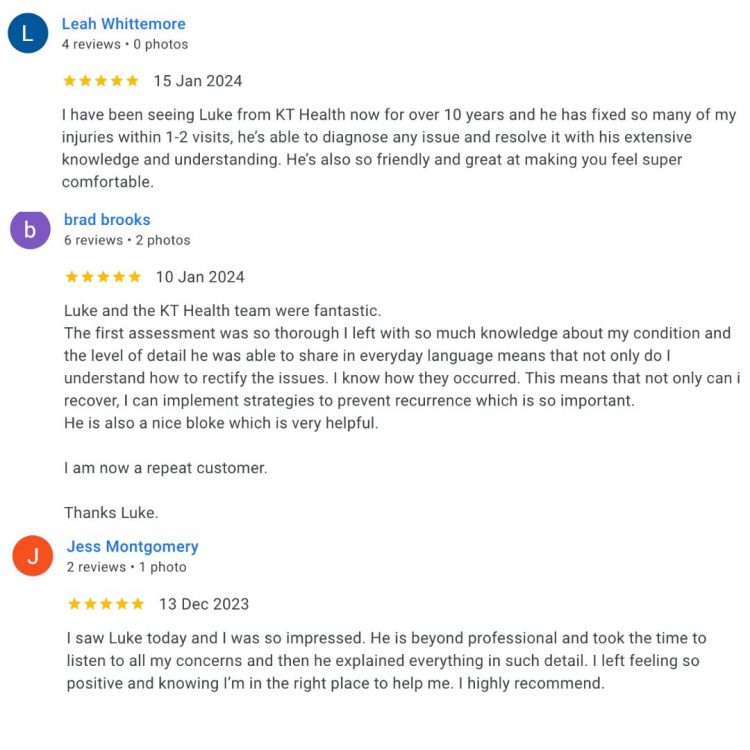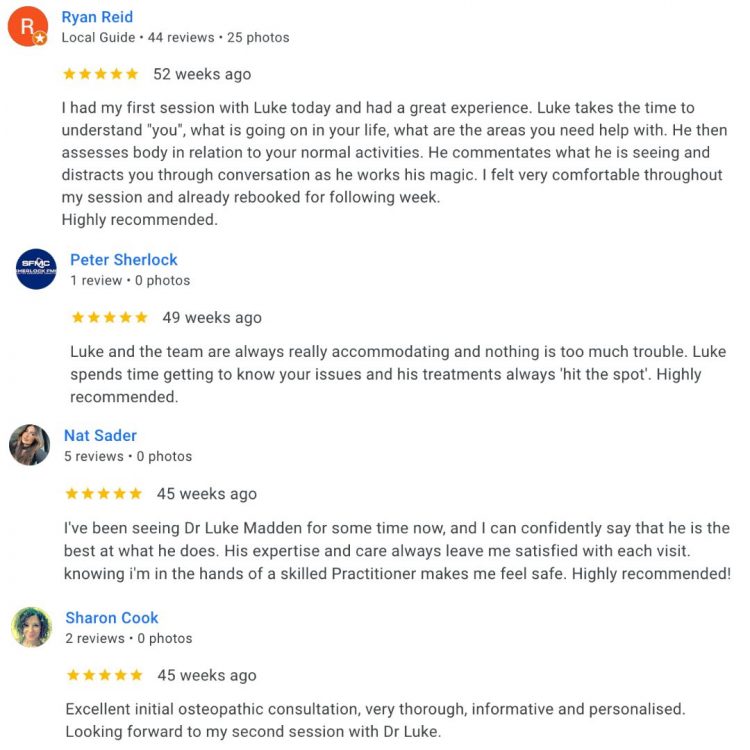Everything You Need to Know About a Groin Strain
What is a Groin Strain?
A groin strain happens when the adductor muscles (the muscles on the inner thigh) are overstretched or torn. This injury is common in sports that involve running, sprinting, changing direction, kicking, or sudden side movements. It causes pain and weakness in the inner thigh or groin area.
An analogy…
Imagine the adductor muscles like elastic bands connecting your legs to your pelvis. If you stretch or snap those bands too suddenly or forcefully, they tear, that’s exactly what happens during a groin strain.
What are other names that a groin strain can be called?
Strained Groin, Pulled Groin, Groin Tear, Torn Groin, Adductor Strain, Torn Adductor Muscle, Adductor Tear
What causes a groin strain?
The adductor muscle group pulls the legs toward the body’s midline. A groin strain happens when these muscles are overloaded, especially during sudden acceleration, deceleration, or stretching movements, causing small or large tears in the muscle fibres or their tendon attachment at the pelvis.
What are the signs and symptoms of a groin strain?
- Sharp or pulling pain in the inner thigh or groin during activity
- Tenderness along the inner thigh, especially near the pubic bone
- Swelling or bruising in the groin area
- Weakness or difficulty squeezing the legs together
- Stiffness and reduced hip movement, especially with stretching
- Pain when sprinting, kicking, cutting, or side-stepping
What tests are used to diagnose a groin strain?
Palpation: Feeling along the groin and adductors for tenderness or swelling
Resisted adduction test: Pain when trying to squeeze the legs together against resistance
Stretch testing: Pulling the leg outward gently to stretch the adductors may reproduce symptoms
How long does a groin strain take to heal?
Grade 1 (mild) strains usually heal in 1 to 2 weeks. Grade 2 (moderate) strains often take 3 to 6 weeks. Grade 3 (severe) strains (partial or complete muscle tears) may require 8 to 12 weeks or longer.
How does a groin strain happen?
- Sudden sprinting, kicking, or rapid direction changes
- Poor warm-up or inadequate flexibility
- Muscle imbalances between the groin muscles and glutes/core
- Fatigue, leading to poor technique during activity
- Weakness in hip stabilisers
- Previous groin injuries increasing re-injury risk
What treatment can help a groin strain?
- Relative rest from aggravating activities early on
- Ice and compression to manage swelling and pain in the first 48–72 hours
- Manual therapy (massage, dry needling, soft tissue release for tight muscles)
- Gentle stretching and progressive strengthening exercises
- Gradual return to sport-specific activities under guidance
What exercises or stretches can I do for a groin strain?
- Isometric adductor squeezes
- Side-lying hip adduction exercises
- Glute and core strengthening drills
- Adductor stretches
What products can help with a groin strain?
Lateral leg swing
Hold on to something for stability.
Swing one leg out to the side and back across the mid-line of your body.
This is a good exercise to warm up your hips and IT bands, especially if you are a runner.

Reverse lunge into high knee lift
Stand up straight and take a large stride behind you with one leg.
Keeping the movement flowing, drop your hips directly down towards the floor by bending both your knees and hips to 90 degrees.
Simultaneously, lift both of your arms out in front of you.
Spring back up from this position, driving your rear leg forwards into a high knee position towards your hands.
Return to the lunge position, and repeat.

Seated adduction ball squeeze
Start in a seated position.
Place a ball between your knees.
Squeeze your knees together, placing pressure on the ball while activating the inner thigh muscles.

Lunge lateral
Start position is standing with the legs slightly bent into a crouch and the arms in the ready position placed in front of the trunk.
Stay in the crouch and side step to the side.
A slight stretch should be felt in the groin as the trail leg straightens.
Stay in the crouch with the trunk upright, and then back to the starting position, remaining in the crouch position.
Repeat in the opposite direction using the other leg.

STOP GUESSING – START MOVING
See what other people have said about our osteopaths
Trustindex verifies that the original source of the review is Google. KT health has really helped my back and i have been able to get back into competitive sportTrustindex verifies that the original source of the review is Google. Absolutely amazing, I see Louie Nouh who always listens and caters to my needs. He is amazing at his job and always helps alleviate my pain. I highly recommend Louie.Trustindex verifies that the original source of the review is Google. Friendly, supportive staff. Such a lovely place to exercise! Highly recommend.Trustindex verifies that the original source of the review is Google. Amazing instructor, I am new to Pilates felt very comfortable & supported.Trustindex verifies that the original source of the review is Google. I have been suffering from shoulder and neck pain for months - I saw Dr Louie Nouh a couple of time. His treatment really relived the pain. I have full range of movement now. His knowledge on exercise is fantastic.Trustindex verifies that the original source of the review is Google. Absolutely love reformer at menai. Instructors are amazing. Love Michaela and love the small classes. Highly recommend!Trustindex verifies that the original source of the review is Google. The trainers are all amazing , they explain everthing step by step and help where needed . It is an amazing place to relax get to know other people have a laugh . I recommend for anyone .Trustindex verifies that the original source of the review is Google. Ever since I came here I’ve been looked after by Louie and my shoulder is already feeling much better. Highly Recommend these are good people.Trustindex verifies that the original source of the review is Google. SENSATIONAL Chiropractor in Menai! I attended my first appointment with Dr Louis Nouh at KT Health & Wellness who is an absolute genius even after one session with him. He explained everything he intended to address about my lower back condition, all in easy to understand, layman’s terms. He said he would call me the next day to follow and see how I was feeling after our session and guess what, he did! During our session, he made me feel relaxed and comfortable especially as it was my first chiropractic appointment EVER! For some reason, I am actually looking forward to my subsequent sessions with him next week. Don’t get me wrong, he did poke, prod and crack me as necessary but the results made it seem worth it.Trustindex verifies that the original source of the review is Google. I have been seeing Melinda now for a couple of months to help with bursitis in my hip. She is one of the best practitioners I’ve ever seen.. With the use of various tools and techniques she has helped me recover much quicker than I expected. Thanks Mel and see you tomorrow!
We don't offer magic fixes or cures, but a sustainable approach to back pain.
Our Osteopaths will offer you a road map to help you take control of your back pain and feel great again.
BOOK YOUR OSTEOPATH VISIT TODAY
Book a Time with Dr Luke Madden Below
Book a Time with Dr Melinda Madden Below
Already have an account?
Book as a guest
- Book an Appointment






